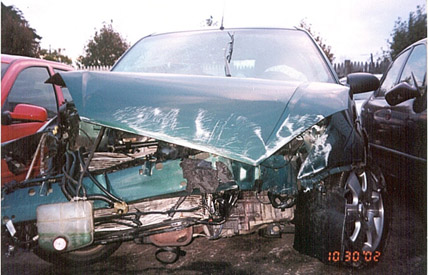Cell Phone Sprawl
Contents
Group Name
Group 2
Group Members
Goldie Ali, Ji Kim, Melanie Engival, Gary Sylvester, Kyle Annesley
Group Topic
The basic evolution of cell phone technology throughout the last few decades and illustrate how it has impacted society.
"From the Zach Morris Special to the iPhone"


Mission Statement
Through our research we will show you how the significant advancements in cell phone technology has led to a situation where people feel the need to always be connected and how that can result in problem in many spheres of life.
RESOURCES USED TO GATHER INFORMATION REGARDING THE MISSION STATEMENT
KYLE:
1. http://www.iii.org/media/hottopics/insurance/cellphones/
2. http://www.aaafoundation.org/resources/index.cfm?button=cellphone
3. http://www.wisegeek.com/what-is-the-difference-between-gsm-and-cdma.htm
4. http://www.mouthshut.com/review/GSM_Mobile_Technology_Vs_CDMA_Mobile_Technology-65504-1.html
5. http://www.hardwaresecrets.com/article/151
6. http://en.wikipedia.org/wiki/History_of_mobile_phones#First_generation
7. http://www.educause.edu/ir/library/pdf/DEC0601.pdf
8. http://en.wikipedia.org/wiki/History_of_mobile_phones
9. http://www.evolutionshift.com/blog/2006/12/08/cell-phones-are-transformative/
12. http://en.wikipedia.org/wiki/3G
13 .http://wiki.media-culture.org.au/index.php/Mobile_Phone_Technology_-_Revolution
14. http://www.anotherpointless.com/school/tlc/321/project/5/
GARY:
1. http://austinche.name/docs/cellphone.pdf
2. http://www.wipo.int/pctdb/en/wo.jsp?wo=2004035353
3. http://electronics.howstuffworks.com/cell-phone11.htm
4. http://www.psrast.org/mobileng/mobilstarteng.htm
5. http://www.informationweek.com/news/showArticle.jhtml?articleID=205207840
6. http://www.grinningplanet.com/2003/cell-phone/environmental-issue-19.htm
7. http://articles.moneycentral.msn.com/Investing/SuperModels/CellPhonesAreTheNewCigarettes.aspx
8. http://www.cbsnews.com/stories/2005/03/29/earlyshow/series/main683777.shtml
9. http://www.cbsnews.com/stories/2005/03/29/earlyshow/series/main683777.shtml
10.http://www.accidentinfo.com/cell-phone-accident.htm
11. http://www.aaafoundation.org/resources/index.cfm?button=cellphone
MELANIE
1. http://www.foxnews.com/story/0,2933,334683,00.html
2. http://www.livescience.com/health/080303-cellphone-risk.html
3. http://www.cit.cornell.edu/cellphone/security.html
4. http://www.aarp.org/research/utilities/phone/fs131_emergency.html
5. http://www.consumeraffairs.com/news04/2008/03/cell_safety.html
6. http://www.privacyrights.org/fs/fs2b-cellprivacy.htm
7. http://www.nhtsa.dot.gov/people/injury/research/wireless/
8. http://www.pta.org/archive_article_details_1152656743812.html
9. http://www.wired.com/culture/lifestyle/news/2003/05/58861
10. http://www.harrisinteractive.com/NEWS/allnewsbydate.asp?NewsID=853
Brief History
FIRST GENERATION OF CELL PHONES
- The first cell phone, the DynaTAC 8000X received approval in 1983.
- The introduction of cellular phones based on cellular networks arose throughout the 1980’s.
- Analog transmission was in use in all systems at this point in time.
- Were designed originally for permanent installation in vehicles.
- Motorola created the first truly handheld phone.
- These systems later became known as first generation, or 1G technology.

SECOND GENERATION OF CELL PHONES
- The second generation or 2G mobile phones (GSM) were introduced in the early 1990’s.
- The first digital cell phone was made in the US in 1990.
- The first GSM network was opened in Finland, in 1991.
- It was in this generation of cell phones went from the large “brick” like phones, into small, easy to hold devices, that are considered to be the norm in todays world.
- The change was due to technological advances in batteries, more energy-efficient devices, but mainly due to the construction of many more cell phone towers and networks.

THIRD GENERATION OF CELL PHONES
- The third generation of technology, also referred to as 3G, was developed not long after the introduction of the 2G services.
- This process was different from the 2G technology in the ways that it did not standardize on technology, but rather on a set of requirements.
- These requirements allowed for people to start using data functions without having to pay the high prices that preceeded this generation.
- This generation was the emergence of CDMA technology.

MAJOR PROVIDERS OF CELL PHONES IN CANADA AND THE US
GSM
- In the US, the major providers of GSM services are Cingular and AT&T, and T-Mobile, Verizon, and Virgin.
- In Canada, the major providers of GSM services are Rogers and Fido.
CDMA
- In the US, the major providers of CDMA services are Sprint, and Alltell.
- In Canada, the major providers of CDMA are Telus, and Bell Mobility.
Evolution Of Cell Phones
HOW ARE CELL PHONES EVOLVING?
- Cell phones have evolved from the original phone in 1983 to the highly technological days of the iPhone, and other pocket PC’s.
- Cell phone users in the United States have increased from 34 million a decade ago, to 203 million today.
- Another major evolution in technology is the ability to use wireless hot spots for your internet and media downloads, and surfing the web.
- The ability to download games with 3D graphics.
- Schools are using cell phones to announce the cancellation of classes, and room changes, as well as find their grades, add and drop courses, basically everything that you need to use the computer for.
This image illustrates the basic evolution from the first to the third generation of cell phones
WHAT ARE THE IMPACTS THAT WE WILL SEE IN THE NEXT 3 YEARS?
- In order for these dramatic changes to happen, we will need to see a change in the battery life that it can last longer.
- Also, phones will need more memory and storage space.
- Devices that can support the new software, and all applications needed.
- Some major problems that we will face with the evolution of cell phones though, are the cheating in classes and on exams, as well as obscene pictures in locker rooms and elsewhere, as well as the ways of capturing audio clips of things that are not meant to be recorded.
CDMA Technology vs. GSM Technology
How do they differ from one another? Which service is considered to be better?
- In Canada, there are numerous different cell phone providers from Telus, Rogers, Fido, Sasktel, and many other smaller government run companies.
- The major difference between to the two main competitors is that Telus uses CDMA technology, where as Rogers uses GSM, or sim card technology.
- The differences between CDMA, and GSM are that while using a GSM phone and sim card, you are easily able to switch cell phones by changing your sim card, as well as your phone is more likely to work in more places, simply because the majority of cell phone use and upgrades are through the ways of GSM.
- GSM stands for: Global Systems for Mobile
- CDMA stands for: Code Division Multiple Access
GSM TECHNOLOGY
- Newer in the market, quickly catching up to CDMA networks.
- SIM card technology, allows for phone upgrade, phone activation, and changed to happen easily.
- GSM carriers having roaming contracts with other GSM carriers allowing for wider coverage of rural areas.
- GSM networks dominate the world market, therefore being able to offer international roaming.
- GSM believed to have over 1 billion subscribers worldwide.
- Cingular/AT&T, T-Mobile, Verizon
- Created in 1990 in Europe
- Voice quality is much higher.
- SIM cards are more secure in fraud prevention.
CDMA TECHNOLOGY
- The data transfer speed is generally higher, better for the more complex cell phone user.
- CDMA believes to have 270 million subscribers worldwide.
- Developed by Qualcomm Inc. in 1995.
- Believed that the evolution ground for CDMA is wider, and will eventually be superior to GSM.

The Need To Be Connected
In today’s society cellular connectivity is a an all time high. By the end of 2007 it was said that there would be 3 billion users of cellular technology and that it would only take another two years to connect the next billion. With that in mind, it is almost a given that each and every individual from the age of 16 and older has their own personal cell phone. Jan Chipchase, a human behavioral researcher, conducted a study on the three most important things that people carry with them at all times. He found that cell phone, keys, and money predominantly occupied the top three. His results were consistent in gender, ethnicity, age, throughout numerous countries world wide. . When you look around anywhere that you go, you see every one from yound kids on their phones talking or sending text messages to their friends, to adults, business men/women also on their phones sending emails, and or talking on the phone. In fact, 41% of cell phone users say they fill their spare time travelling, or waiting by making calls and using other features of their cell phone.
The need to be connected in our society is so pervasive, that the wireless companies are coming out with their own handheld PC’s and smart phones. These allow businessmen and women to basically be in the office, even when they are not. This seems to be causing large problems with the way we function as individuals when we do not have access to our cell phones, computers and handheld devices. It is also argued that it causes problems within families when a certain member of the family can never get away from work, even when they are at home, or on vacation.
Check your cell phone. Is it within arms reach? When was the last time you checked your cell? Two minutes ago? Five? Ten? A China study in 2006 found that nearly a third of high school students showed signs of addiction, including paranoia, when they were without their phones, and two-thirds were "constantly worried" that they would miss a text message when their phones were off. The term "deprivation" is used for the loss of cell phone contact, which causes anxiety in even moderate cell phone users. This shows the dependency that we have on our phones, and for people to be able to get a hold of us at any time, during any day. Before the times of cell phones, it forced people to be more organized and have their days planned out before they started, rather than flying by the seat of your pants and using your phone to schedule things minute by minute.
In the fast paced world we live today, addiction is something that we see and many people with are caught dealing with on a daily basis. Addiction when spoken of in terms of alcohol, or drugs, or gambling are seen as major problems that hamper the lives of many individuals worldwide each and every day. When we speak about addiction, can you bring cell phones into the mix? Obviously, it is a type of addiction that is not hurting your body, but is something that can lead to events that will hurt you, possibly even kill someone, such as using your cell phone while driving. This brings about many questions that we should be asking ourselves, and one another. Should cell phones be banned while driving? Do we NEED to talk to someone so badly that it cannot wait until you are not driving, and not risking your life along with that of others? These are some serious questions, that need to be answered before people continue to be injured as a result of other people being 'unattentive' or just simply not paying attention.
Cell phones are clearly an integral part of society and are relied upon by many people, for a vast number of reasons. We as people need to start to realize and be aware of not just the positive things that these pieces of technology bring to our society, but be aware of the negative impacts that they have. Everything from disrupting people from everyday activities to causing car accidents and even resulting in death need to be made aware, and people need to do their part to prevent these things from happening, and find a happy medium when it comes to cell phone use.

Cell Phones And Security
This past December a study of Americans found that nearly 90 percent of men and women age 18 to 29 owns a cell phone, and 32 percent of them indicated that they “couldn’t live without” their cell phone. This dependency on a mobile device is shocking. Even more interesting is the information about why we find it so necessary to own and carry a cell phone at all times. Approximately 3 in 4 American cell phone owners over 18 admit to carrying their phone due to the sense of safety and security it provides. Nearly a third say that carrying their cell is critical to their sense of safety and security.


But does carrying a cell phone really make you safer? This sense of security that one finds from a cell phone can actually make people more likely to engage in risky behaviour. In fact, more women than men admit they are willing to walk somewhere after dark they normally wouldn’t if they are carrying a cell phone. Even for those individuals who claim to carry a cell phone mainly for emergency purposes, a cell phone cannot protect you from all of life’s circumstances. Many people believe that they are safe in car accidents and other unpredicted situations because of close availability of a cell phone. However, there is no guarantee that you will be able to reach your cell phone when you are in an accident. Not to mention, the overwhelming evidence that cell phone use while driving a vehicle actually causes accidents!
Disruption In The Class Room
With the ability to communicate via text messaging, cell phones are becoming omnipresent in the hands of students all over the world and causing problems in class rooms. It was easy for a school to simply ban the usage of cell phones when they weren't such a dependable device. Although, due to numerous events in the past decade, these rules have been skewed and abolished in numerous school settings. Things began to change drastically after the 9/11 attacks on the World Trade Centers and other serious violent attacks on campuses across the US. The need to have a cell phone evidently became a necessity in the eyes of parents world wide as a means of emergency or leisure communication with their siblings. Schools in turn, began to ease off on the rules regarding cell phone usage because they would be faced with cases of liability if anything threatening was to happen. This controversy raises many questions to educators regarding the appropriate grounds to follow regarding this nuisance. Here are some of the questions raised by educators: Where do you draw the line? Do schools have the right to confiscate cell phones from disruptive students? When is cell phone usage appropriate? Should camera phones be aloud? Are students cheating on exams by text messaging their friends? Numerous other questions can be brought up regarding other serious societal ailments.
I think we all would agree that it is safe to say that we are interrupted in class, or in times of study by your phone ringing, or receiving a text message. When you look around a university classroom at any time during a lecture, you are guaranteed to see numerous people with their phones out, text messaging or emailing. With this being the case, we are concentrating more on what is going on with our cell phone than the lecture itself. These devices are proving more and more of a distraction to students whether it’s physically being on your phone, or your phone ringing in class and disrupting the entire room. In fact, 81% of cell phone owners reports being irritated by loud and annoying cell users who conduct their calls in public places and 8% admit to having drawn criticism and ungrateful stares from others while using their cell phone in public.
Harmful Effects of Cell Phone Usage
Driving
In recent years the number of car accidents is steadily increasing due to numerous factors. Although falling asleep, drinking and driving and carelessness tend to cause about three quarters of them, the National Highway Traffic Safety Administration (NHTSA) says that cell phone usage and negligence while driving have been causing at least a quarter of all crashes. This has recently become more of a problem because of how many people own cell phones and feel the need to use them while commuting. In 2003, The Cellular Telecommunications & Internet Association says there are 137 million subscribers in the United States and of those 137 million users, NHTSA, points out that at any given moment of the day, 500,000 drivers of passenger vehicles are talking on handheld cell phones. With such staggering numbers like that in 2003, and the substantial increases in the 5 years since, it becomes clear that this is not an issue to take lightly and perhaps legislation should be used to address this perceived hazard of cell phone usage while behind the wheel.
In some countries this has been addressed and there are laws protecting the people who don't take this risk. Australia, Austria, Germany, Greece, Ireland, Italy, Japan, Russia, and Switzerland are some of the countries that have taken action and implemented legislation against cell phone use by drives. In the United States bills to restrict cell phone use in cars have been introduced in both the House and the Senate. Among the states, only New York has passed a law banning the use of handheld cell phones for drivers, although other states are considering similar laws. In the United States alone, cell phone distraction causes 2,600 deaths and 330,000 injuries in the United States every year (2005). The same study said that motorists who are engaged in cell phone conversations while driving are less capable than drunk drivers with blood alcohol levels exceeding .08. With statistics like that in such a pervasive market, it is clear that cell phones pose a serious threat to motorists world wide.
Below are a few pictures of car accidents that are a result of cell phone usage:



Each of the following accidents resulted in fatalities.


